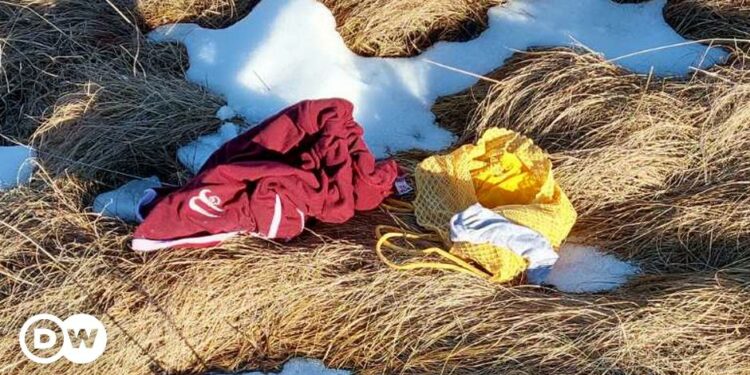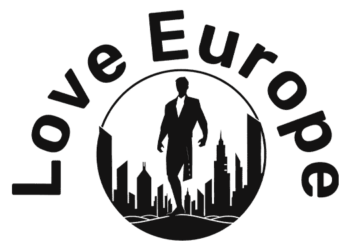“The visibility of migrants and their contact with the local population depends on the degree to which they are criminalised and illegalized,” explains Izvor Rukavina, an activist at Gradovi utocista and sociologist at the University of Zagreb, the capital of Croatia.
“In Italy and Bosnia, it is easier for migrants to show themselves in public without putting their onward journey at risk,” he said. “In Croatia and Slovenia, the risk of imprisonment and pushbacks is much higher, especially when they talk to the media.”
‘Seven-days paper’: Basis for future readmissions
This was not always the case. Before Croatia joined the Schengen Area, the authorities there used to give migrants what were known as “seven-days papers” that allowed them to stay in the country for a maximum of seven days.
These documents and the personal data in them are now being used as grounds for possible future deportations and readmissions of asylum-seekers from other EU countries.
Migrants are no longer as visible in Croatia as they were in recent years (pictured here: migrants in Rijeka in January 2023)Image: Goran Kovacic/PIXSELL/picture alliance
“Back then, for example, a humanitarian supply point was set up in Rijeka, where more than 100 people a day were supplied with refreshments and staple foods before they moved on,” says Rukavina.
This project was wrapped up in early 2024 when the flow of migrants into the city stopped. “However, large numbers of migrants are still passing through Croatia, which is why we now speak of ‘invisible migration,'” Rukavina told DW.
Pushbacks and drownings
When migrants now feature in Croatian media, it is generally in the context of reports about the arrest of people smugglers at police checkpoints or truck accidents in which migrants were injured and, consequently, discovered.
Such reports do not come from the border region, but from the roads leading from Bosnia and Serbia across Croatia to EU neighbors Italy, Slovenia and Austria.
For years now, there have been reports of brutal pushbacks on the Bosnian–Croatian border. Such pushbacks are illegal according to EU law.
A refugee activist at a press conference in London in October 2018 shows a photo of a migrant with bruising on his legsImage: picture-alliance/P. Macek
Croatia’s border police force uses modern equipment such as drones to locate migrants who want to cross the EU’s external border from Bosnia into Croatia.
But before they even reach the border, migrants have to cross Bosnia, which is still peppered with land mines from the war that raged there between 1992 and 1995.
Mines are just one of the dangers that migrants face on their journey north. Aid organizations such as SOS Balkanroute from Austria report that a growing number of unidentified migrants are drowning in the rivers along Croatia’s borders with Bosnia and Serbia.
Over 95% of migrants leave Croatia
“Only 3.6% of the people who declared their intention to apply for international protection in the Republic of Croatia actually make a formal application,” the Interior Ministry in Zagreb told DW. “We have no information about the countries to which these people went.”
Just 1,012 people are currently registered as refugees in Croatia, including three Palestinians and 23 Russian citizens.
Ukrainian refugees attend a friendly between the soccer clubs Dinamo Zagreb (Croatia) and Dynamo Kyiv (Ukraine) in April 2022Image: DENIS LOVROVIC/AFP/Getty Images
In addition, just under 25,000 Ukrainians have fled to Croatia since Russia invaded their country almost three years ago and have been granted temporary protection status.
According to the Interior Ministry, all these people are entitled to “accommodation in a reception center, food and clothes in kind, the reimbursement of the cost of public transport for the purposes of the granting of international protection and financial support to the tune of €20 a month.”
Germany seeks to return 16,000 to Croatia
The number of people who need this support could increase dramatically in the future.
In late November, DW’s Croatian Service reported that Germany would like to return 16,000 migrants to Croatia. “The Federal Republic would like to increase the speed of the deportation of people who are not entitled to protection,” it noted.
Such readmission requests between EU member states are in line with the bloc’s Dublin III Regulation, which rules that the country where an asylum-seeker first entered the EU or where he or she was first registered is responsible for that person.
Germany sought to return 74,622 asylum -eekers to other EU states in 2023Image: picture alliance/dpa
In 2023, Germany sought to return 74,622 asylum-seekers to other EU states. Most readmission requests went to Italy (15,749) and Croatia (16,704). While the Italian authorities reject such requests as a rule, the Croatian authorities have been much more cooperative.
According to Croatian Interior Minister Davor Bozinovic, Germany has requested only 1,519 readmissions to his country so far this year. Of this number, only 401 were actually returned to Croatia.
Speaking at a press conference in Zagreb on November 27, Bozinovic said that Croatia has “agreed with Germany that a further 182 people will be readmitted by the end of the year.”
This article was originally published in German.
Source link : http://www.bing.com/news/apiclick.aspx?ref=FexRss&aid=&tid=6766e1b4a59e48bba5ba5e412912ec25&url=https%3A%2F%2Fwww.dw.com%2Fen%2Fcroatia-schengen-less-than-4-percent-of-the-26000-migrants-who-enter-croatia-apply-for-asylum-there%2Fa-71036434&c=5272339540816881772&mkt=de-de
Author :
Publish date : 2024-12-11 16:00:00
Copyright for syndicated content belongs to the linked Source.


